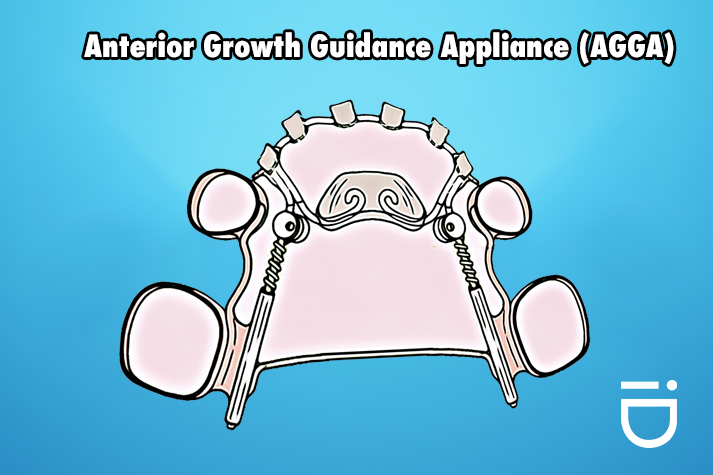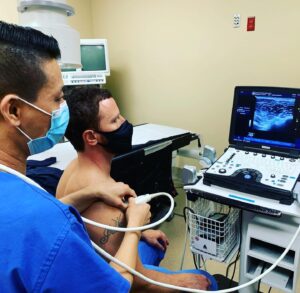Contents
- Overview of Anterior Growth Guidance Appliance
- The Benefits of Anterior Growth Guidance Appliance
- Candidates for Anterior Growth Guidance Appliance
- Initial Consultation and Diagnosis
- The Procedure for Anterior Growth Guidance Appliance
- Follow-up Care and Monitoring
- Success Stories from Anterior Growth Guidance Appliance
- Comparison of Anterior Growth Guidance Appliance with Traditional Orthodontic Treatments
- Risks and Limitations of Anterior Growth Guidance Appliance
- Cost and Insurance Coverage
Are you tired of traditional orthodontic treatments that can be uncomfortable and time-consuming? Look no further than the Anterior Growth Guidance Appliance (AGGA), a revolutionary solution that is transforming the field of orthodontics. Specifically designed to aid in the growth and development of the upper jaw, the AGGA offers a groundbreaking alternative to traditional braces and aligners. By applying gentle pressure to stimulate bone growth, this innovative appliance helps to correct the alignment of the jaw and improve facial aesthetics. Say goodbye to long and painful orthodontic treatments, and say hello to a more efficient and comfortable way of achieving a beautiful smile. The AGGA is here to revolutionize the world of orthodontics.
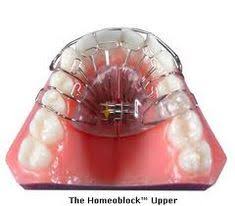
Overview of Anterior Growth Guidance Appliance
Definition of Anterior Growth Guidance Appliance
The Anterior Growth Guidance Appliance, commonly referred to as AGGA, is a revolutionary orthodontic solution that aims to correct jaw and facial imbalances by promoting natural growth and development. It is a non-surgical treatment that uses a removable, custom-made appliance to guide the growth of the upper and lower jaws. The AGGA works by applying gentle pressure to the teeth and bone structures, stimulating their growth and gradually aligning the jaws into their proper positions.
How Anterior Growth Guidance Appliance Works
The AGGA works by employing the principle of orthodontic expansion, which involves widening the upper and lower dental arches to create more space for the teeth. Unlike traditional braces or aligners, the AGGA focuses on correcting the underlying skeletal structure rather than just straightening the teeth. By stimulating the growth of the upper and lower jaws, the AGGA helps to improve the alignment of the teeth, correct bite problems, and enhance overall facial profile.
The AGGA is designed to be worn for a certain period of time each day. It exerts a gentle pressure on the teeth and jawbone, encouraging them to move into their optimal positions. Through this process, the AGGA helps to stimulate the growth of the upper and lower jaws, leading to improvements in facial aesthetics and proper alignment of the teeth. Regular adjustments and monitoring by the orthodontist ensure that the appliance is gradually guiding the growth in the desired direction.
The Benefits of Anterior Growth Guidance Appliance
Improvement in Facial Profile
One of the key benefits of the AGGA is the improvement it brings to the patient’s facial profile. By guiding the growth of the upper and lower jaws, the AGGA helps to correct imbalances in the skeletal structure, resulting in a more harmonious and balanced facial appearance. Patients often notice reductions in a retruded chin, a receding or flat midface, and a more prominent and defined jawline.
Correction of Malocclusion
Malocclusion, or improper alignment of the teeth and jaws, can lead to several oral health problems and aesthetic concerns. The AGGA is highly effective in correcting malocclusion by focusing on addressing the underlying skeletal issues. By stimulating jaw growth, the AGGA helps to align the upper and lower dental arches, improving bite alignment and eliminating problems such as overbites, underbites, crossbites, and open bites.
Enhanced Breathing and Sleep Quality
The AGGA can also have a positive impact on breathing and sleep quality. Jaw and facial imbalances can contribute to airway obstructions, which may result in breathing difficulties, snoring, and sleep apnea. By correcting these imbalances and improving the position and function of the jaws, the AGGA helps to open up the airway, allowing for smoother and more efficient breathing. This, in turn, can lead to improved sleep quality and overall well-being.
Avoidance of Extractions or Jaw Surgeries
Traditional orthodontic treatments often involve the extraction of healthy teeth to create space for alignment. In some cases, more severe skeletal imbalances may require jaw surgery to correct the underlying issues. The AGGA offers a non-invasive alternative to these procedures, allowing patients to avoid extractions and surgical interventions. By guiding natural growth and development, the AGGA helps to achieve the desired results without the need for invasive treatments.
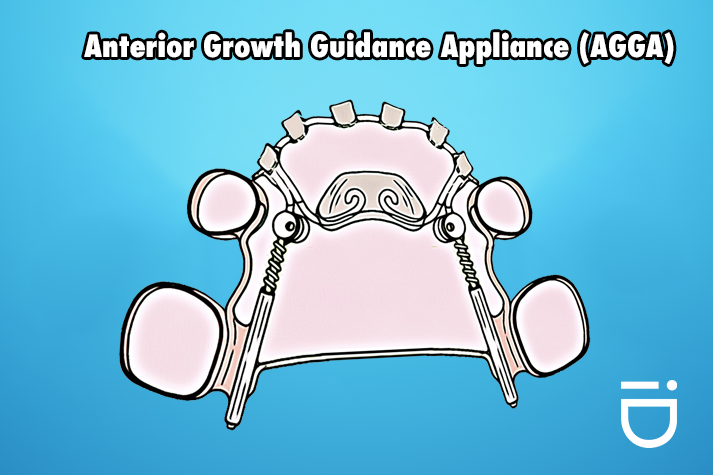
Candidates for Anterior Growth Guidance Appliance
Early Intervention Patients
The AGGA is particularly beneficial for early intervention patients, typically children and teenagers in their growing years. By guiding the growth of the upper and lower jaws at an early stage, the AGGA can help to address skeletal imbalances and prevent more severe orthodontic problems from developing in the future. Early intervention with the AGGA allows for natural growth and development, resulting in improved facial aesthetics and a more balanced bite.
Orthopedic Growth Patients
Patients with orthopedic growth issues, such as a retruded or underdeveloped maxilla or mandible, can greatly benefit from the AGGA treatment. The appliance helps to stimulate targeted growth in the affected areas, encouraging the jaws to develop into their proper positions. This can lead to significant improvements in facial aesthetics, proper bite alignment, and overall oral health.
Adult Patients Seeking Non-surgical Solutions
While the AGGA is commonly used in early intervention and orthopedic growth cases, it can also be a suitable option for adult patients seeking non-surgical solutions for jaw and facial imbalances. The appliance can help to guide the growth of the upper and lower jaws, even in adulthood, resulting in improvements in facial aesthetics, bite alignment, and overall oral health. Adult patients who wish to avoid surgical interventions or prolonged use of traditional braces may find the AGGA to be an effective and efficient alternative.
Initial Consultation and Diagnosis
Evaluation of Facial and Oral Condition
During the initial consultation, the orthodontist will evaluate your facial and oral condition to determine if you are a suitable candidate for the AGGA treatment. This will involve a comprehensive examination of your facial structure, teeth alignment, bite, and overall oral health. Photographs and x-rays may be taken to aid in the diagnosis and treatment planning process.
Dental and Skeletal Exam
A thorough dental and skeletal exam will be conducted to assess the severity and nature of your jaw and facial imbalances. The orthodontist will examine the position of your teeth, the alignment of your upper and lower jaws, and the relationship between your dental arches. This examination helps to determine the appropriate course of treatment and whether the AGGA is the right option for you.
Radiographic Analysis
Radiographic analysis, such as panoramic or cephalometric x-rays, may be performed to provide a more detailed view of your dental and skeletal structures. These images allow the orthodontist to assess the underlying bone structure, tooth position, and the relationship between the upper and lower jaws. The radiographic analysis helps in accurate treatment planning and monitoring of the progress throughout the AGGA treatment.
Discussion of Treatment Goals and Expectations
Once the diagnosis is complete, the orthodontist will discuss the treatment goals and expectations with you. This is an opportunity for you to express your concerns, ask questions, and understand what the AGGA treatment can achieve for you. The orthodontist will explain the treatment process, potential outcomes, and any limitations or risks associated with the treatment. Together, you and your orthodontist will develop a tailored treatment plan that addresses your specific needs and desires.
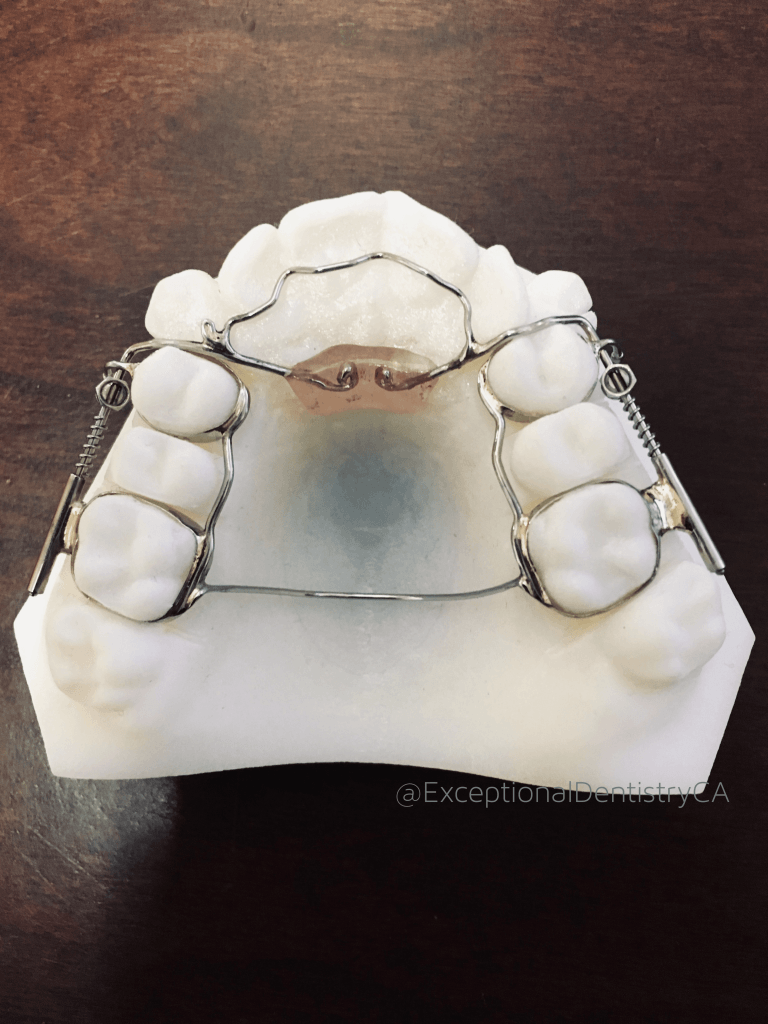
The Procedure for Anterior Growth Guidance Appliance
Impression and Fabrication of Appliance
After the initial consultation and diagnosis, the next step in the AGGA treatment process is the impression and fabrication of the appliance. Impressions of your upper and lower teeth will be taken using dental putty or digital scanning technology. These impressions serve as the basis for creating a custom-made appliance that fits snugly over your teeth and exerts the necessary pressure to guide the growth of your jaws. The impressions are sent to a dental laboratory where the AGGA appliance is fabricated with precision.
Placement and Adjustment of Appliance
Once the AGGA appliance is ready, you will have another appointment with your orthodontist for its placement and initial adjustment. The orthodontist will carefully position the appliance in your mouth, ensuring it fits comfortably and securely. The appliance may feel slightly strange or bulky at first, but you will gradually get used to it. The initial adjustment involves making any necessary modifications to ensure that the appliance is providing the desired pressure and guiding the growth of your jaws correctly.
Monitoring and Adjustment Period
After the placement of the AGGA appliance, regular monitoring and adjustment appointments will be scheduled. These appointments allow the orthodontist to assess the progress of your treatment and make any necessary adjustments to the appliance. The orthodontist will check the fit of the appliance, assess the movement of your teeth and jaws, and make the appropriate changes to ensure the desired growth and alignment are achieved. The monitoring and adjustment period may last several months to a few years, depending on your individual case.
Follow-up Care and Monitoring
Regular Check-ups and Adjustments
Throughout the course of your AGGA treatment, regular check-up appointments will be scheduled to monitor your progress and make any necessary adjustments. These appointments are essential to ensuring the optimal growth and alignment of your jaws and teeth. The orthodontist will evaluate the movement of your teeth, the changes in your facial profile, and the overall success of the treatment. Any necessary adjustments to the appliance will be made at these appointments to ensure optimal results.
Monitoring of Progress and Growth
During each check-up appointment, the orthodontist will closely monitor the progress and growth of your jaws and teeth. This may involve taking additional photographs or x-rays to track the changes in your facial and dental structures. By carefully monitoring your progress, the orthodontist can ensure that the AGGA treatment is guiding the growth in the desired direction and achieving the desired outcomes.
Managing any Discomfort or Issues
While wearing the AGGA appliance, you may experience temporary soreness or discomfort, especially during the initial adjustment period. Your orthodontist will provide you with guidance on how to manage any discomfort or issues that may arise. This may include recommendations for pain relief measures, tips for maintaining oral hygiene while wearing the appliance, and instructions on how to address any speech changes that may occur. Your orthodontist will be available to address any concerns or questions you may have throughout the treatment process.
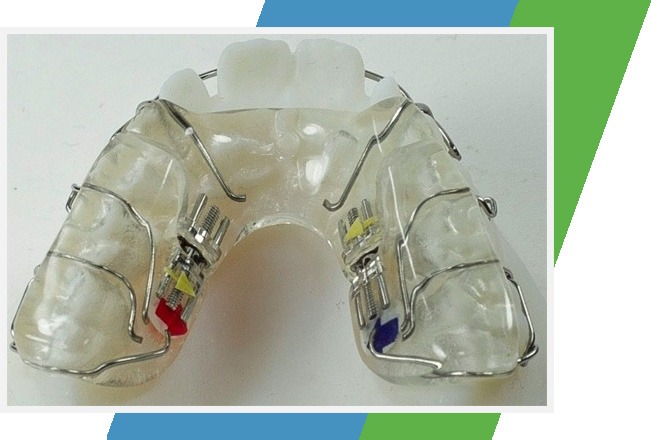
Success Stories from Anterior Growth Guidance Appliance
Case 1: Correcting Class II Malocclusion
One success story of the AGGA treatment involves a patient with a Class II malocclusion, characterized by an overjet or an anterior crossbite. The patient underwent the AGGA treatment, which focused on guiding the growth of the upper and lower jaws. Over time, the patient’s facial profile improved significantly, with a more balanced and harmonious appearance. The anterior crossbite was corrected, resulting in proper bite alignment and improved functionality. The patient achieved a confident smile and enhanced oral health through AGGA treatment.
Case 2: Improving Facial Profile and Breathing
Another success story involves a patient who sought AGGA treatment to improve their facial profile and address breathing difficulties. The patient had a retruded maxilla and a receded midface, which affected their appearance and obstructed their airway. Through the AGGA treatment, the patient’s upper jaw was guided to grow forward, effectively improving their facial aesthetics. The open bite and airway obstruction were also corrected, leading to enhanced breathing and improved sleep quality. The patient experienced a significant transformation in both their appearance and overall well-being.
Comparison of Anterior Growth Guidance Appliance with Traditional Orthodontic Treatments
Advantages of AGGA over Braces and Aligners
The AGGA treatment offers several advantages over traditional braces and aligners. While braces and aligners primarily focus on aligning the teeth, the AGGA goes a step further by addressing the underlying skeletal imbalances. By guiding the growth of the upper and lower jaws, the AGGA achieves improvements in facial aesthetics, bite alignment, and overall oral health. Additionally, the AGGA treatment can often be completed in a shorter period than traditional braces or aligners, resulting in faster results for the patient.
Differences from Surgical Solutions like Jaw Surgery
Jaw surgery is a traditional solution for correcting severe skeletal imbalances and malocclusion. However, it involves invasive procedures, a longer recovery period, and potential risks. The AGGA offers a non-surgical alternative to jaw surgery, allowing patients to avoid the associated risks and recovery time. While jaw surgery focuses on correcting the skeletal structure through surgery, the AGGA stimulates natural growth and development, gently guiding the jaws into their proper positions. This makes the AGGA a more comfortable, efficient, and less invasive option for patients seeking orthodontic treatment.
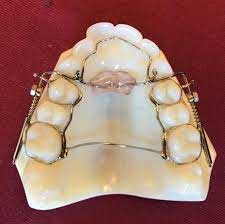
Risks and Limitations of Anterior Growth Guidance Appliance
Temporary Soreness or Speech Changes
As with any orthodontic treatment, wearing the AGGA appliance may cause temporary soreness or discomfort. Some patients may also experience temporary changes in their speech, such as a slight lisp or altered pronunciation of certain sounds. These issues are usually minor and tend to resolve as you adjust to wearing the appliance. Your orthodontist will provide guidance on managing these temporary discomforts and speech changes.
Potential Need for Additional Orthodontic Treatment
In some cases, the AGGA treatment may need to be followed by additional orthodontic treatment to achieve optimal results. While the AGGA can address many dental and skeletal issues, some patients may require further refinement or alignment of their teeth. This may involve the use of braces, aligners, or retainers to achieve the desired final result. Your orthodontist will discuss any potential additional treatment needs and develop a comprehensive plan to ensure the best possible outcome for your smile.
Not Suitable for Severe Skeletal Dysplasia
While the AGGA treatment is effective for a wide range of orthodontic conditions, it may not be suitable for patients with severe skeletal dysplasia or deformities. Severe skeletal imbalances typically require more extensive orthodontic interventions, such as jaw surgery, to achieve the desired outcomes. Your orthodontist will conduct a thorough evaluation of your condition to determine if the AGGA treatment is appropriate for you or if alternative treatment options should be considered.
Cost and Insurance Coverage
Average Cost of Anterior Growth Guidance Appliance
The cost of the AGGA treatment can vary depending on various factors, including the complexity of the case, the patient’s age, and the geographical location of the orthodontic practice. On average, the cost of the AGGA treatment ranges from $3,000 to $8,000. The total treatment cost typically includes the initial consultation, diagnostic procedures, appliance fabrication, orthodontic visits, and follow-up care. Your orthodontist will provide you with a detailed treatment plan and cost estimate based on your specific needs.
Insurance Coverage and Reimbursement Options
Insurance coverage for the AGGA treatment may vary depending on your insurance plan and the specific terms of your coverage. Some insurance plans may cover a portion of the treatment cost, while others may not include orthodontic treatment in their coverage. It is important to contact your insurance provider to determine the extent of your coverage and any reimbursement options available. Additionally, some orthodontic practices offer financing options or payment plans to help make the AGGA treatment more affordable and accessible for patients.
In conclusion, the Anterior Growth Guidance Appliance offers a revolutionary orthodontic solution for correcting jaw and facial imbalances. Through its unique approach of guiding natural growth and development, the AGGA can achieve improvements in facial profile, correction of malocclusion, enhanced breathing and sleep quality, and the avoidance of invasive procedures. The AGGA treatment is suitable for a wide range of patients, including early intervention cases, orthopedic growth patients, and adult patients seeking non-surgical solutions. Through a comprehensive initial consultation and diagnosis, precise placement and adjustment of the appliance, and diligent follow-up care and monitoring, the AGGA treatment can lead to successful outcomes. However, it is important to consider the potential risks and limitations associated with the treatment, as well as the cost and insurance coverage considerations. If you are seeking an effective and non-surgical orthodontic solution, the Anterior Growth Guidance Appliance may be the ideal option for you. Consult with your orthodontist to determine if this treatment is suitable for your specific needs and achieve the smile and facial aesthetics you desire.

